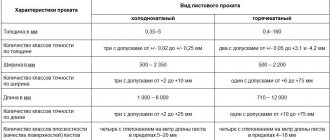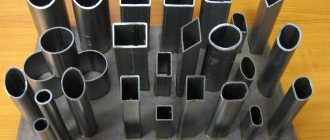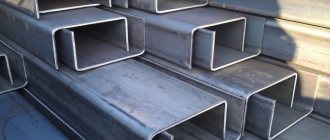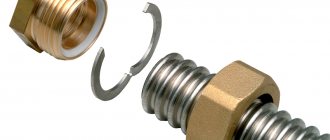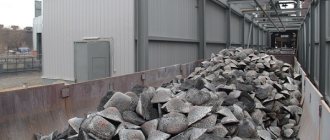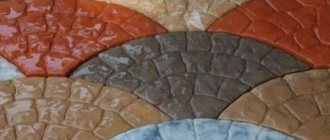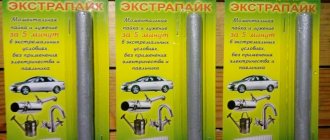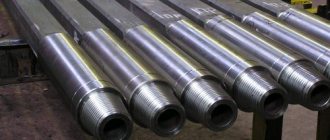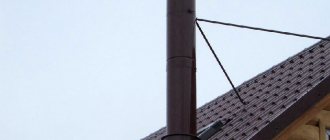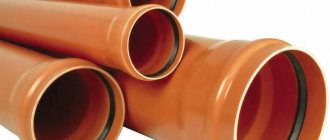Features and differences
The difference between annealed and unannealed copper pipe lies in the production technology. Products also differ in certain properties that affect the application of the product.
At the beginning of the production process of any type of copper pipe, the ore is processed in several stages. This produces "raw copper". The produced raw materials are cleaned of impurities. To do this, the so-called raw metal is purged with oxygen under high pressure. As a result, copper is formed, the frequency of which is more than 99%.
High frequency metal is used to make unannealed pipe by stamping and rolling. Manufacturing methods reduce the elasticity of the material, but increase its strength. This indicator for unannealed products is 340-450 MPa. Due to its high strength, rolled pipe can only stretch by 6%.
Annealing is used to increase stretch. This process involves heat treatment of the product. Unannealed steel is heated from 600 °C to 700 °C. Then a vacation is performed - the processor slowly cools the product. The result is an annealed pipe with new properties. Elasticity increases significantly.
Annealed copper pipe.
An annealed copper pipe can be lengthened by stretching even by 50%. In this case, the tensile strength is 220 MPa. Despite the significant difference in these indicators, annealed pipe is more often used when installing engineering systems.
It is easier to connect when using fittings. The tightness in this case will be no less than when using welding. Rolled products after heat treatment can withstand freezing for up to 5 cycles without significant expansion.
During production, unannealed copper pipes are not exposed to high temperatures. For this reason, the internal structure of the metal does not change.
Copper pipe production methods
The first stages of production of both annealed and unannealed pipes differ little from working with other materials.
The ore is subjected to special processing, eliminating foreign impurities. After this, the metal is formed, rolled or stamped. The output is an unannealed copper pipe. Unannealed pipe is strong, but copper loses its ductility during the manufacturing process. Therefore, it becomes impossible to bend the pipe during installation. Annealing makes copper ductile. Annealing is a heat treatment at temperatures up to +700 ºC, and then slowly cooled. As a result, the strength of the products decreases (but remains sufficient to withstand pressures of several tens of atmospheres), and the ductility increases. Such products are in demand when installing household pipelines.
Advantages and disadvantages
Copper pipes after heat treatment acquire additional useful qualities:
- Ability to withstand high pressure. Especially thick-walled pipes have this quality.
- Resistant to humid environments and sudden temperature changes. The operating range is from -100°C to 250°C.
- Resistance to UV rays, alkalis, acids and other various aggressive substances due to the use of a special inert composition during annealing.
- Increased flexibility.
- Easy installation.
- Service life more than 50 years.
- Antibacterial properties, so dangerous microorganisms do not appear, much less multiply, in products.
- Corrosion resistance.
- Smooth inner surface for good maneuverability.
- Resistance to deformation when exposed to high temperatures. Even for thin-walled pipes.
- Reduced heat loss and absence of condensation on the surface of rolled pipes with a polymer coating.
- Preservation of properties when water freezes in rolled pipes.
The main disadvantage of copper products is their high cost compared to other materials - polyvinyl chloride and steel. The cost of purchasing pipes pays off during their operation, because there is no need to carry out repair work and maintenance for a long time.
The disadvantages also include some difficulties during soldering. Only an experienced person who owns special tools and equipment can perform the work efficiently.
Unannealed copper pipe.
Negative aspects also include the weak resistance of rolled products with thin walls to mechanical stress. It is easily deformed.
The disadvantage is the high thermal conductivity of copper. Therefore, a heated pipe can easily cause injury in the form of a burn. It is recommended to use protective equipment during installation work and during system maintenance.
Advantages and disadvantages of copper products
Annealed products are resistant to high humidity levels, frequent and sudden changes and temperature surges. A thick-walled copper pipe can withstand almost any pressure.
Modern production technologies involve the application of an external polymer layer, which reduces heat loss. This solution is important for the use of copper pipes in hot water supply and heating systems. The outer coating also prevents condensation.
Copper products have a smooth inner surface, which allows them to maintain good permeability throughout their entire service life. They have excellent heat resistance. Even a thin-walled pipe can withstand high temperatures without deformation.
A special inert composition is used for annealing. This measure ensures the resistance of the pipes to ultraviolet rays and various aggressive substances, for example, alkalis, acids. An annealed pipe does not lose its technical characteristics when the water in it freezes.
Copper pipes can be connected by soldering or fittings, but each method is quite labor-intensive and requires strict adherence to installation rules
Disadvantages include the rather high cost of products and the complexity of installation work. In addition, small mechanical impacts on thin-walled copper pipes can lead to their deformation.
Specifications
High-quality copper pipes are manufactured only in accordance with GOST. The amount of impurities in manufactured products is regulated by GOST R 52318 2005. According to the state standard, their percentage in non-ferrous metal should not exceed 0.1%.
GOST 617-90 defines the range of rolled copper pipes. The following metal grades are used in the manufacture of products: M3r, M3, M2r, M2, M1r and M1.
Manufacturers produce three main types of pipe products:
- solid products;
- semi-solid products;
- soft pipes.
In accordance with the standard, pressed, drawn and cold-rolled copper pipe products are produced. Any product must be free of any defects.
Annealed rolled products are produced in coils of lengths of 15, 25 and 50 m. Unannealed pipes are produced only in the form of straight sections. Their standard lengths are 3 and 5 m. Deformation cannot be corrected after bending.
Dimensions of copper pipes in inches and millimeters table.
When selecting the diameter of the pipe, the nominal pressure and performance of the system are taken into account.
Characteristics of annealed and unannealed pipes
Copper pipes are subject to several regulations. The impurity content is determined by GOST R 52318-2005 and should not be more than 0.1%. The range of copper pipes is regulated by GOST 617-90, which determines the use of copper grades M3r, M3, M2r, M2, M1r, M1. Products can be:
- hard;
- semi-solid;
- soft.
The standard distinguishes cold-rolled, drawn and pressed copper pipes. The main requirements regulated by the document relate to the condition and shape of products. Plumbing annealed and unannealed pipes should not have external or internal defects.
Note! The destruction of the annealed pipe occurs at a pressure of 200 atm.
It can be operated in a wide temperature range - from +250 to -200 °C. Such indicators relate to the parameters of the coolant and the external environment.
An unannealed pipe may become irreversibly deformed when you try to bend it, so such products are supplied in straight sections. Annealed versions are often supplied in coils.
Annealed pipe is more flexible and can be easily bent without the risk of deforming the walls.
The annealing stage imparts increased ductility to the copper pipe, which means possible rupture when it is elongated by 60%. The service life of copper products is up to 100 years.
Areas of application
Rolled copper alloy pipes are mainly used for installation of utilities. External and internal networks are created from it. These can be heating systems, hot and cold water supply, air conditioning and even drainage systems.
Rolled copper is also used in the production of hydraulic devices, refrigeration units and in the automotive industry. The products are used not only in administrative and public buildings, apartments and cottages, but also in industrial facilities, boiler rooms and laboratories.
Advantages and disadvantages of copper pipes
Copper products have many positive qualities. Heat-treated pipes withstand moisture and any temperature changes perfectly. If we talk about thick-walled copper pipes, they are also capable of withstanding very high pressures.
In modern production processes, a polymer layer can be applied to copper pipes to reduce the level of heat loss - and this is very important in heating systems and hot water supply. In addition, the presence of the coating prevents moisture from condensing on the surface of the pipes.
The inner surface of copper pipes is quite smooth, so it is almost not prone to deposits. This quality allows you to fully use copper pipes throughout the entire period of operation. It is also worth noting that such pipes (even the thinnest ones) can withstand high temperatures perfectly without the slightest damage.
During annealing, the pipe is treated with an inert composition, which makes the pipes resistant to ultraviolet radiation and most aggressive chemicals. Annealed pipes can work without problems even after the water in them freezes.
Copper pipes also have disadvantages, but they are few: firstly, it is worth noting the very high cost of such products, which makes their use impractical in some areas. Secondly, installing copper pipes can be quite problematic for an inexperienced person. In addition, thin-walled products have their own drawback - insufficient strength.
